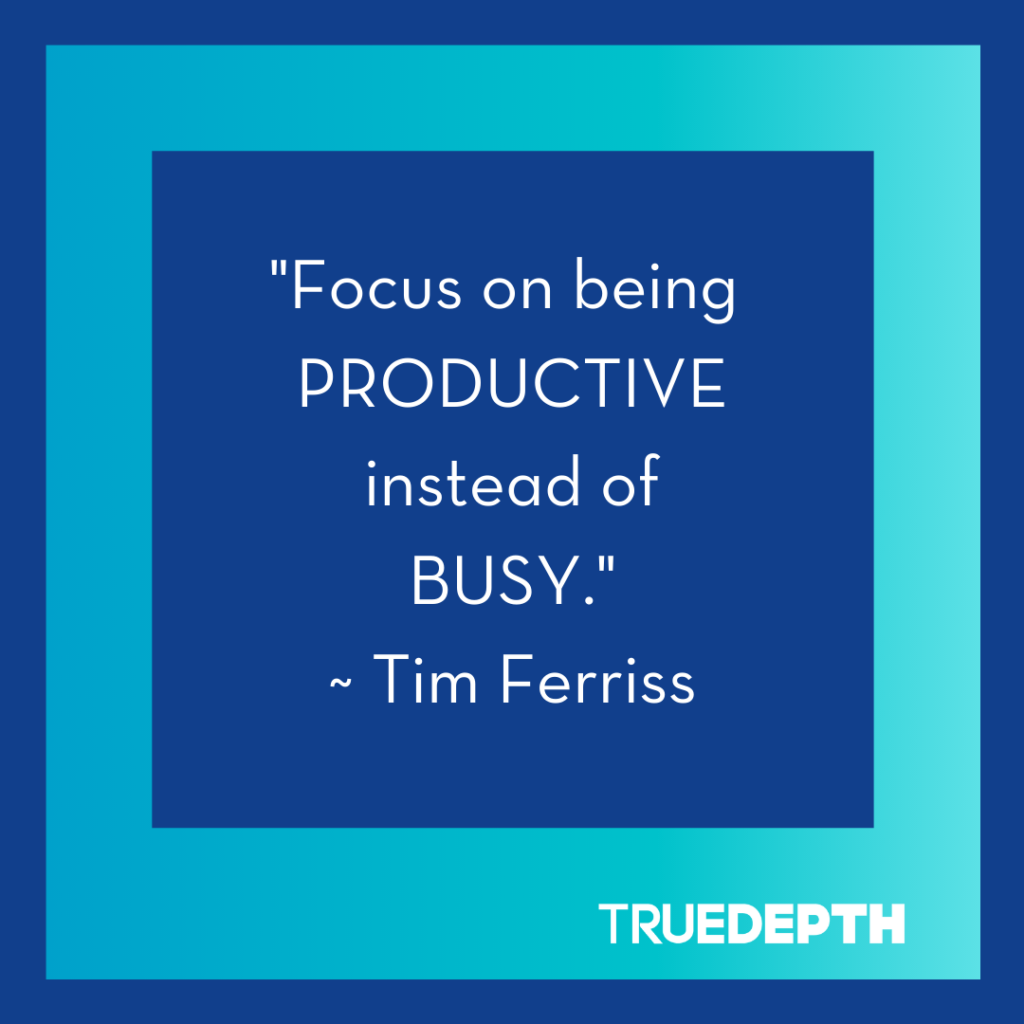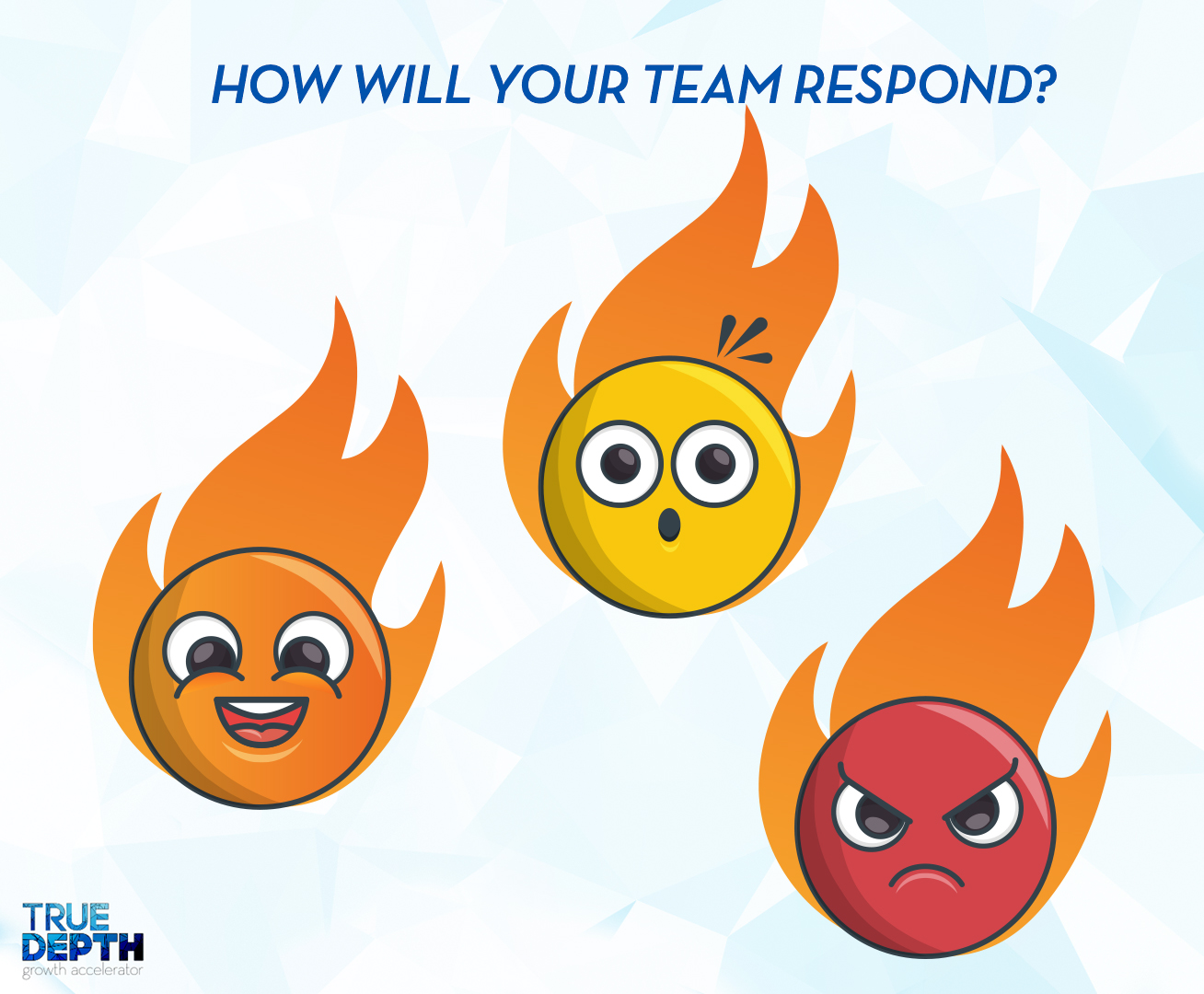You might be familiar with burnout as a term or have even felt the effects…
Five Tips to Maximize Your Productivity
Anywhere the term “productivity” shows up, the consensus is that there should always be more of it and that we should do whatever it takes to achieve it.
Our relationship with increasing productivity started in the early 1900s, when self-styled motion study and efficiency experts looked for ways to streamline industrial workers’ movements to enable assembly lines to move as quickly – and profitably – as possible. It was meant to keep workers moving non stop in prescribed, repetitive patterns deemed to be most efficient.
Over time, this idea became ingrained in our psyche, with many companies today still holding employees to increasingly high (and often unreasonable) goals. And many times they must meet these goals to be considered for promotions, raises, and other benefits.
These requirements often force employees to make the most of their working day by plowing through tasks uninterrupted and gulping down lunches at their desks – all while trying to multitask and do three things simultaneously.
When it comes to truly increasing productivity, these tactics don’t work. Expecting people to work like machines is counterproductive and generally demoralizing to staff.
But, it doesn’t have to be this way.
Below are some of the key steps you can take toward real productivity improvement, and we’ll begin at something you can start immediately.
1. Embrace a concept feared by free spirits everywhere: a routine.
If that sounds forbidding, it shouldn’t. We’re talking about your routine, the one that works best for you, that’s matched to your work style, pace, and rhythms. Most elements of your routine probably already exist; your job at this point is to judge what’s comfortable, logical, and effective.
Start with consciously identifying the elements of your daily routine. These are both the ones you’ve purposely chosen and those you’ve unconsciously adopted, then:
- Evaluate their value in helping you achieve your objectives.
- Prioritize them accordingly.
- Ditch the ones that don’t work.
- Keep the ones that do.
As you go, pay close attention to what you already know about yourself as a professional and as a person. Are you most productive at a particular time of day? Do you require a specific setting to be effective?
Next, write down your new, optimized sequence of what you’ll do and when you’ll do it – for today, tomorrow, next month, and next year.
2. More work seldom leads to better quality
If “more is always better” is our mantra, we’re setting ourselves up for disappointment and burnout. So, what do we do about it? My answer:
Pay less attention to the “more” and more attention to the “better.”
I’m not saying we should do away with key performance metrics, but we have to change the way we think about productivity.
Many still believe that employees who remain chained to their desks, working at the office until 7 p.m. and then signing on later in the evening are the “productive stars.” In truth, these employees aren’t necessarily productive; they’re just working longer, drinking more coffee, and looking busy.
Even worse, it forces employees to remain and “be seen” in the office working late – even if they aren’t producing any real results. While these tactics might provide some minor boosts, they almost certainly reduce the quality of our output and productivity. It’s also sure to result in burnout eventually.
Luckily, science has proven what many of us have always thought:
3. We’ve got to punctuate work with regular, meaningful breaks.
For the sake of productivity, as well as our well-being. The fact is, taking regular time-outs during the workday goes a long way towards both improving the quality of output and a person’s state of mind.
The need for these breaks doesn’t change because an employee works from home or in an office. Everyone needs some form of these brief, frequent breaks throughout the day.
Taking breaks benefits both the employee and the employer in several ways:
- Stress Reduction. Sustained, intensive focus – particularly when seated at a desk – lets physical stress build-up without an opportunity to dissipate. Getting up and moving around loosens the safety valve.
- Improved objectivity. Stepping back from your work, even for a few moments, helps put it in a broader context—the result: More objective, better-reasoned decisions.
- Enhanced creativity. Your mind requires a balanced conceptual diet, and staring at the same spreadsheet for hours at a time doesn’t provide it. Different forms of stimuli activate other areas of our brains and help them work in sync to conceptualize better or problem-solve.
This study breaks down the best times to take breaks, and for how long (evidently, the most productive workers tend to take breaks averaging 17 minutes at 52-minute intervals).
Not everyone will need 17-minute breaks every hour and a half to be productive. Personal productivity is indeed just that: Personal. What works for one won’t work for someone else. Recognizing that, and not judging others with differing needs, is an excellent first step.
4. Find your groove
From an early age in figure skating competitions, I learned that repeatedly practicing my routine prepared me for the main event no matter how nervous I was.
Why? Because I knew my routine and could always count on it to pull me through a stressful competition. We can do the same in our professional lives too.
Suppose we want to be good at our work. In that case, we need to embrace repetition – not only in a micro sense associated with specific tasks but in the macro sense of our entire approach to the work we do.
5. Make a list, and stick to it
Most people either love or loathe making lists.
I consider myself in the former group. Growing up, my mother always had a list to check off. There were even lists about making lists – it wasn’t odd to see “Make Packing List for Family Vacation” or “Start List for Christmas Dinner” among them.
I remember thinking that seemed absurd, but now, I’m an admitted listaholic. I have lists in my office and at home. Some are on paper and others across multiple devices. I create checklists, to-do lists, and shopping lists. What works for me, though, may not work for you.
Regardless of how you go about it, making lists is one of the top tactics for boosting your productivity. But it takes more than writing things down; you need to follow through on them.
By the time you’ve listed all of your to-dos – preferably in order of time sensitivity and importance – you may feel exhausted before you’ve even started your work. It probably looks daunting, like a map for an unending and not especially inviting journey. However, that’s not a problem with the list, it’s a problem with your attitude.
A list is one thing above all else: a step-by-step guide to doing what needs doing. As such, it’s your ally in achieving the successes you want, both the immediate short-term goals and long-term aspirations.
When you create a list, you’re performing an important mental exercise of naming and defining the specific things you need and intend to do. It’s mental preparation for actually approaching the tasks systematically and effectively.
As you complete tasks and physically check off items, you’re giving yourself a small reward of acknowledgment and a sense of movement and progression. Checking off things provides visible evidence that you’re getting somewhere, one of the best motivators to keep up your momentum.
A funny thing happens once all the items are checked off: Your perspective changes.
The list that looked so imposing at the start of the day, week, month, or year doesn’t seem ominous anymore. Instead, it’s evidence of a job well done, and hopefully a source of personal satisfaction.
Adjust the details as you go, if needed, but don’t abandon your plan. Remember: this is your guide for increasing your capabilities and effectiveness for each day.
The possibilities are limitless. Your actual optimum set of circumstances is entirely personal and specific to you. Your challenge is to understand where, when, and how you do your best work – and then optimize your means of routinely placing yourself in those circumstances.
Redefining productivity
Maximizing productivity no longer means staying the latest at the office, working as quickly as possible, or establishing high or unattainable goals.
Instead, productivity is about putting resources – thoughts, effort, and energy – to their most effective use in achieving the specific goals that you value. Your productivity is your measuring stick, not anyone else’s.
After all, we’re all humans, not robots on an assembly line.
Is your productivity in need of a boost? Let’s connect today.




